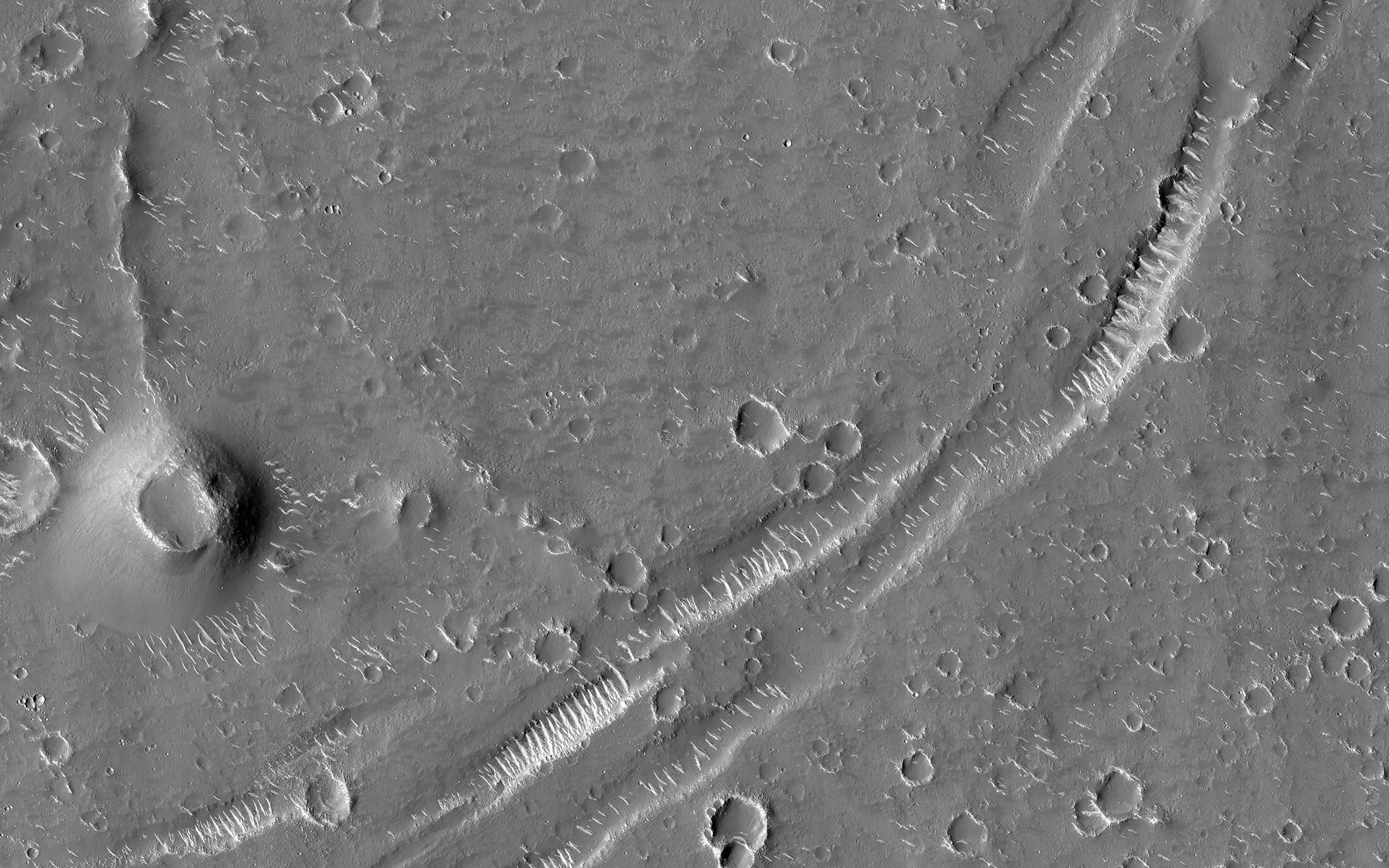
|
Ghost Craters of Utopia Planitia
- Click the image above for a larger view
- Full-Res JPEG (2880 x 1800) (842.6 kB)
- Full-Res TIFF (2880 x 1800) (4.9 MB)
Caption:

Map Projected Browse Image
Click on image for larger version
Sometimes we see circles on the Martian landscape with no apparent cause, such as in this picture of Utopia Planitia.
Landscapes have rich histories, and what's happening here is likely the result of a long sequence of events. Impact craters are common throughout Mars' history. This area of Utopia Planitia has been buried by material and some of these craters have been buried with it. Loose material compacts over time and if there was the same thickness of material everywhere, then the surface would drop in height by the same amount everywhere.
However, there's more of this material inside the buried craters than outside, so there's more compaction and dropdown of the surface in the circular area above the buried crater. This stretches the surface and causes the cracks to appear around the edge. The crater may be long lost from view, but it's still affecting the landscape today.
The map is projected here at a scale of 50 centimeters (19.7 inches) per pixel. (The original image scale is 57.3 centimeters [22.6 inches] per pixel [with 2 x 2 binning]; objects on the order of 172 centimeters [67.7 inches] across are resolved.) North is up.
Background Info:
The University of Arizona, in Tucson, operates HiRISE, which was built by Ball Aerospace & Technologies Corp., in Boulder, Colorado. NASA's Jet Propulsion Laboratory, a division of Caltech in Pasadena, California, manages the Mars Reconnaissance Orbiter Project for NASA's Science Mission Directorate, Washington.
Cataloging Keywords:
| Name | Value | Additional Values |
|---|---|---|
| Target | Mars | |
| System | ||
| Target Type | Planet | |
| Mission | Mars Reconnaissance Orbiter (MRO) | |
| Instrument Host | Mars Reconnaissance Orbiter | |
| Host Type | Orbiter | |
| Instrument | High Resolution Imaging Science Experiment (HiRISE) | |
| Detector | ||
| Extra Keywords | Color, Crater, Impact, Map | |
| Acquisition Date | ||
| Release Date | 2021-07-28 | |
| Date in Caption | ||
| Image Credit | NASA/JPL-Caltech/University of Arizona | |
| Source | photojournal.jpl.nasa.gov/catalog/PIA24698 | |
| Identifier | PIA24698 | |
